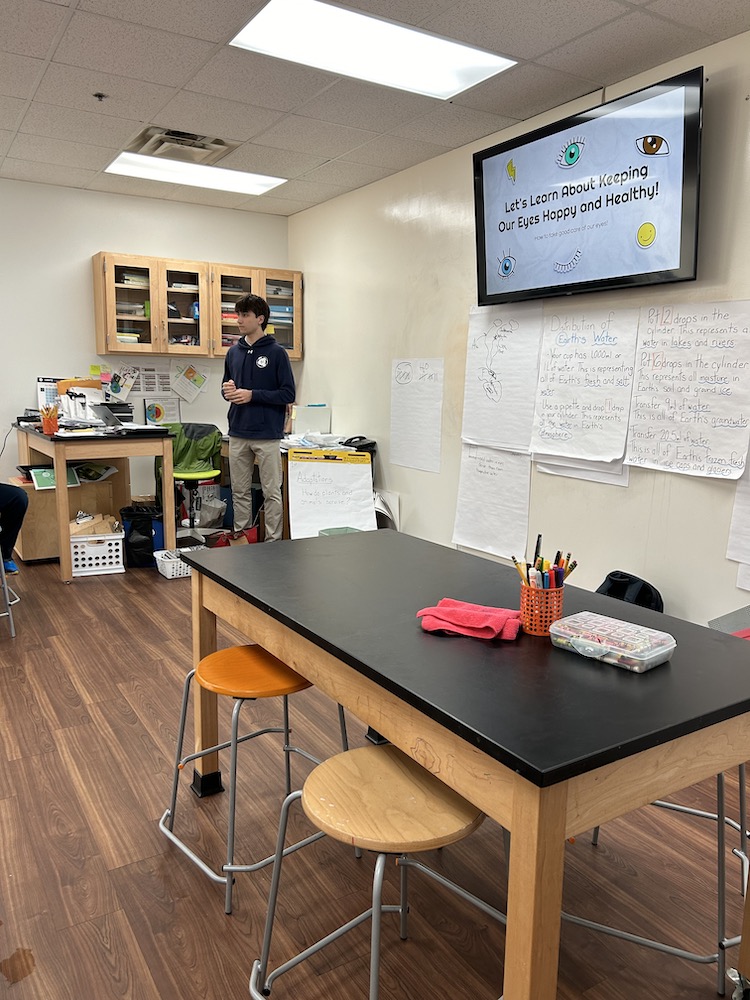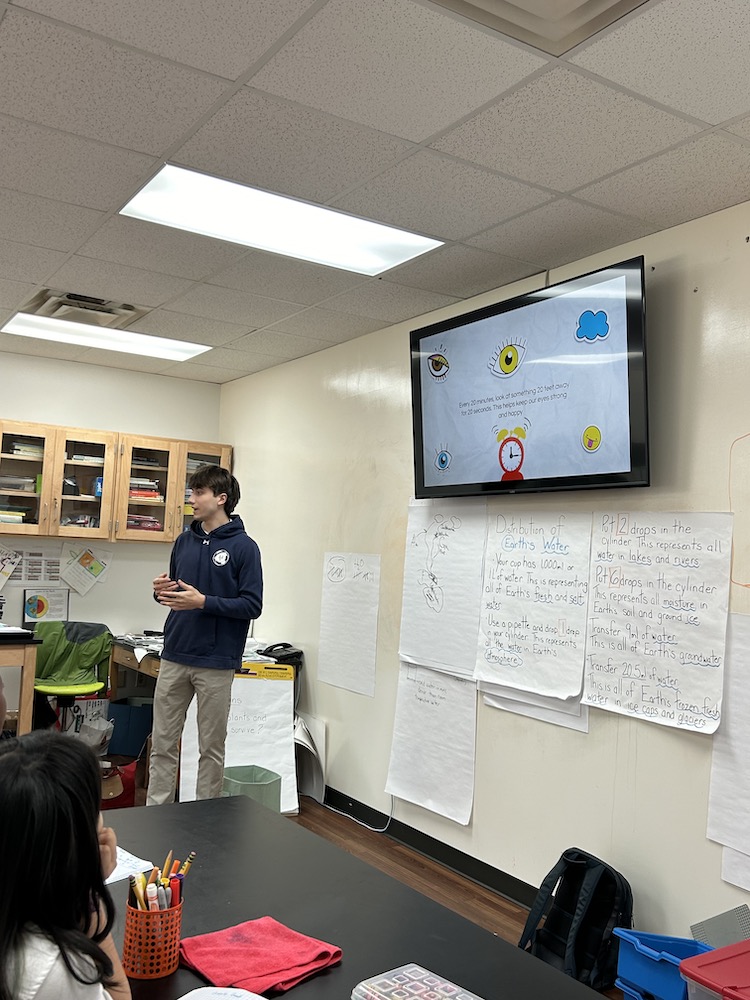What are the real impacts of blue light and digital screen usage on our eyes? This was the question that drove Dante Romagnoli’s iProject journey. A member of the class of 2026, Dante was curious to unravel the effects of blue light on our eyes. Blue light is a portion of the visible light spectrum that can influence alertness, hormone production, and sleep cycles. This wavelength of light is emitted by LED and fluorescent lights, as well as many electronic devices. With a mission to empower the most vulnerable demographic—children between the ages of 3 and 8—Dante crafted a strategic plan in iProject II. His aim? To cultivate awareness and advocate for healthy digital practices that safeguard eye health.
The Myth of the Blue Light and the 20-20-20 Rule
One of the guiding questions of iProject I is “What do you want to know more about?” Mount Vernon’s mission is for student learning to be driven by curiosity and passion in the areas of Inquiry, Innovation, and Impact. In iProject, students have an opportunity to drive their own learning and manage their own projects. Patrick Allegra, Dante’s iProject teacher shared many times iProjects can take twists and turns and that is all part of the learning journey. “Dante actually had an epiphany one evening and came to speak to me about it. His eyes felt dry from extended periods of staring at his phone screen. Inspired by this discomfort, Dante conceived an idea for an app aimed at prompting users to take breaks from their screens. Unfortunately, he discovered through subsequent research that such features were already embedded in smartphones.”
One of the requirements of iProjects is to engage with subject matter experts. Dante reached out to the Thomas Eye Group (TEG) Chat bot for additional insights. To his surprise, they responded, prompting him to delve deeper by sending questions directly to the doctors at TEG. Through the collaboration with TEG he unearthed several misconceptions surrounding blue light exposure. He discovered blue light from the use of smartphones, tablets, computers and other screens does not have direct negative impacts on our eyes, but it does have adverse neurological effects on sleep cycles.
With the advent of artificial light and electronics, people are being exposed to increased amounts of light before bedtime. While all types of visible light can affect circadian rhythms, blue light has the largest impact. Blue light stimulates parts of the brain that make us feel alert, elevating our body temperature and heart rate. Blue light suppresses the body’s release of melatonin, a hormone that makes us feel drowsy. While this promotes wakefulness during the day, it becomes unhelpful at night when we are trying to sleep.
It was also during the interactions with the doctors at TEG that Dante learned about the 20-20-20 rule, a recommendation from the doctor that advocates taking regular breaks to alleviate eye strain. Every 20 minutes of screen time, take a 20-second break and look at something 20 feet away.
Putting Ideas into Action
Dante shifted his focus towards the Myth of the Blue Light and the 20-20-20 Rule. Dante explained that gaining the insights wasn’t enough, he wanted to take it further. “I wanted to share this information with people because I knew there were a lot of misconceptions about this subject, when I was in touch with the ophthalmologist, he said doctors are not as worried about eye strain with adults, they are more worried about younger people who are growing up with devices in front of them. I knew I had a potential outreach accessible to me with Lower Campus students.” Dante explained.
His next step involved crafting a curriculum to educate younger children about the importance of eye care and the 20-20-20 rule.
Through a collaboration with Lower Campus Science teacher, Eileen Fennelly, Dante was able to share his research with several lower school classes as a guest teacher. Dante prepared age-appropriate presentations for Grade 1, and Grade 4 he knew he wanted them to retain the 20-20-20. To make the experience interactive and fun, the younger students prepared superhero mask templates for them to cut out and color. He then asked them to share what superpowers they would want to have with their vision. At the end of the presentations he asked each class what they learned and they all responded with the 20-20-20 rule.
Ms. Fennelly shared the impact Dante had on Lower School students, “The kids loved that he did his own research with the Thomas Eye Group.They loved that he designed and executed his own project as a class, and I was impressed with his initiative to teach and reach as many students as possible.He took the initiative to come over and teach his lesson to our first grade students and it went so well he taught the fourth grade. His project is a great example of iProject research, initiative and success.”
Dante’s work doesn’t stop here. He wants to do more to help parents and younger students understand the importance of eye health. He hopes to keep working within the school and maybe even expand his project to reach more people.
Dante’s story epitomizes Impact Readiness—where initiatives are both consequential to self and meaningful to others. By translating his iProject exploration into actionable change within the Lower Campus, Dante took his research and put it into action for the benefit of others.




